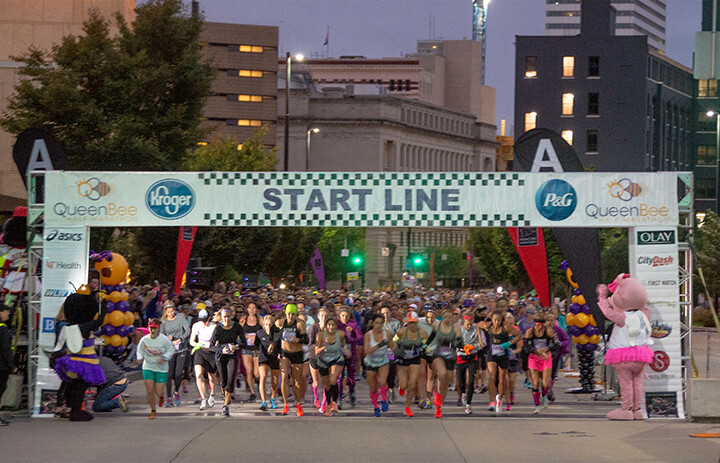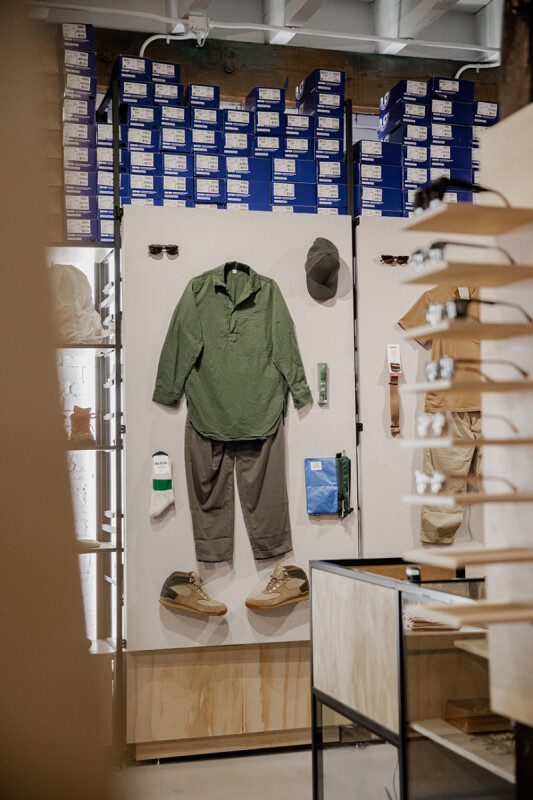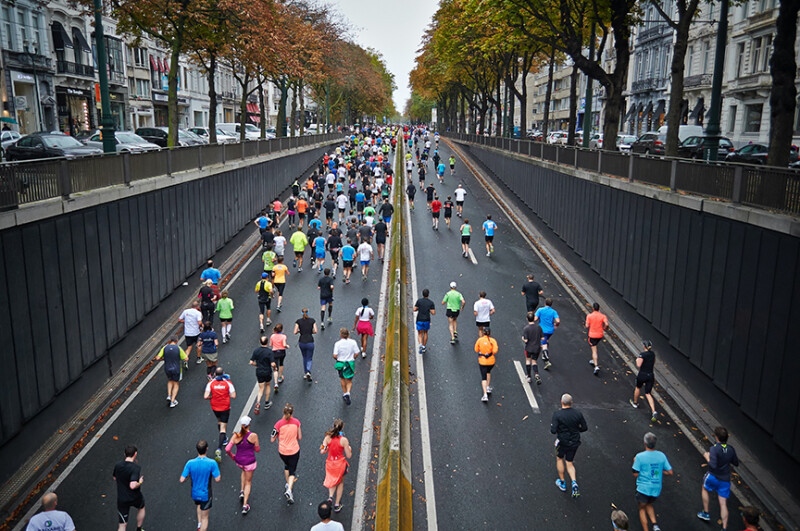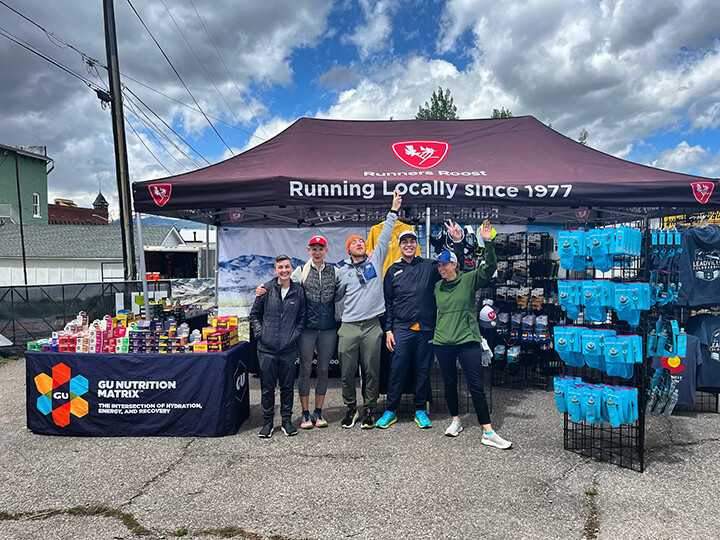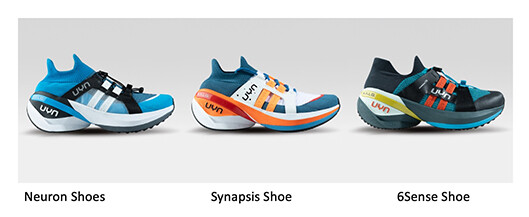Over the last 15 years, the Lake Sonoma 50 has established itself as one of the premier ultrarunning events in the U.S., but the heralded 50-mile event in northern California wine country has something new on the docket for 2023: the addition of the Trail Sisters Women’s Half Marathon.
The brainchild of Trail Sisters founder – and Lake Sonoma 50 race director – Gina Lucrezi, the women’s half was concocted to minimize participation barriers and any intimidation women might feel in the traditional co-ed racing space.
“[The Trail Sisters Women’s Half Marathon] is about creating something more palatable,” Lucrezi says. “Through Trail Sisters, I’ve seen firsthand the opportunity to create camaraderie and empowerment among women and this half marathon is an extension of that.”
The launch of a women’s half marathon at an already well-established event is the latest twist in races crafted exclusively for women, a movement that first began in 1972 when the New York Road Runners introduced the Crazylegs Mini Marathon (now the New York Mini 10K). Since then, other women-only races have come on board, such as the Boston 10K for Women, the Nike Women’s Half Marathon in San Francisco and the Disney Princess Half Marathon in Orlando. More recently, there’s been a noticeable uptick in women-only trail races.
In 2019, the RunSignup platform hosted 78 women-only races. Last year, even with the pandemic’s impact still rippling across the nation’s racing scene, RunSignup featured 124 women-only races, a jump of 45 percent.
While these women-only events eliminate half of the prospective participation pool – some events do allow men to participate, it’s worth noting – Lucrezi says women-only races are not about maximizing capacity or the dollar.
“This is about celebrating women in sport as well as building camaraderie and engagement,” she says.
Creating Women-Focused Events
Back in 2014, Runner’s World loudly asked, “Do Women-Only Races Still Have a Purpose?” The 1214-word story detailed the rise of women’s events and their resonance, but also discussed a potential saturation point and criticisms against the races, namely for reinforcing gender stereotypes.
Nine years later, the Runner’s World-posited question is an interesting one to revisit in the running landscape as races and running shops, particularly those with race operations arms, seek to rebound from pandemic-era shutdowns, stand out from other fitness or social opportunities clamoring for attention and connect with their audiences in meaningful ways.
Pig Works, the organization behind the Flying Pig Marathon and other Cincinnati races, launched the Queen Bee Half Marathon a decade ago in response to rising participant interest in a female-centric event. Pig Works has consistently delivered that at the Queen Bee Half with flowers, mimosas and chocolate at the finish line, its pampering-focused Bee-U-Tique Expo and an unapologetic focus on celebrating women as friends, sisters, mothers and daughters. Nearly 34,000 women have completed the Queen Bee Half and the accompanying Medpace 4-Miler since the event’s 2014 debut.
“Women appreciate being pampered, being celebrated and being recognized for their accomplishments,” Pig Works CEO Iris Simpson Bush says.
In Michigan, local running store chain Gazelle Sports established She Runs Grand Rapids (originally called Gazelle Girl) in 2012 to celebrate the 40th anniversary of Title IX, the landmark federal legislation that ignited opportunity for women in sport. Though Gazelle leadership noted a sizable uptick in women shopping at its Michigan stores, it didn’t necessarily see female race participation rising in parallel. With She Runs Grand Rapids, Gazelle aimed to curate an experience exclusively for women and nudge female race participation forward.
Creating a Space for Women
“We wanted to create a space for sisterhood and camaraderie, minimize the intimidation factor and allow women to be completely comfortable showing up at the event as their authentic selves,” says Cara Cross, director of brand for Gazelle Sports and the She Runs Grand Rapids race director since 2016.
Meanwhile, events such as the Trail Sisters Women’s Half Marathon in Lake Sonoma and the Women’s Epic Race Series characterize the latest development in the women-only race movement — that is, a move from the road to the trail.
In 2021, Jodi Horton and Ashlee Hinds launched a 5.8-mile women’s trail race at Brighton Resort in Utah. The duo focused on thoughtful race touches designed with women in mind. They awarded necklaces instead of medals at the finish line, prioritized women’s-oriented swag and provided menstrual products on race day.
Last year, Horton and Hinds added a second race in southern Utah. And this year, their Women’s Epic Race Series will expand further, including a half marathon at Brighton Resort as well as a virtual challenge in April to accommodate a larger audience.
“We’ve realized quickly that women crave deep, meaningful connections with nature and fellow women as well as something challenging and uplifting,” Horton says.
Staying Power?
At its pre-pandemic peak, She Runs Grand Rapids corralled as many as 4000 participants across its three race distances (5K, 10K and half marathon). After coming back fully live last April with more than 1300 total finishers, Cross says registration for the 2023 event on April 30 was up 40 percent from pre-pandemic levels at the close of December.
“Last year was a year for people to test their comfort level and we feel we’re back full force now,” Cross says.
While acknowledging a vast number of great co-ed races on the nation’s running landscape, Cross believes women-only events carve out a special space exclusively for women and one they can make their own.
“There’s empowerment at the start line and a feeling of accomplishment and sisterhood that goes a long way to creating community,” Cross says.
The relatability factor stands another key point of differentiation for women-only races and something race directors like Horton and Hinds champion. While Women’s Epic events feature pro athletes as well as first-time mountain runners, Horton and Hinds say there are universal experiences many share, such as balancing motherhood and fitness while navigating a daunting physical adventure together.
“Our races are competitive, but there’s also a connection and joy in women supporting one another,” Hinds says.
And to be sure, the women-only events also encourage women on the sidelines to get to the starting line. Pig Works, for instance, collaborates with local groups such as Dress for Success Cincinnati and City Gospel Mission to support their female clients and help them accomplish their first half marathon or four-mile race. Bush says Pig Works’ women-only events, which sell out annually, empower women to “get out of their comfort zone and face a new challenge.”
Lucrezi, meanwhile, says women-only races help eliminate anything that takes women away from the opportunity to trial the sport.
“There are no catcalls or whistles or women feeling they’re on display and that eases concerns,” Lucrezi says.
The unique flavor of women-only events bodes well for their future, especially as women continue to register for such events and show appreciation for the opportunities.
“That’s why we’re seeing growth all over the nation: women realize we have such a great time together,” Horton says.
Lucrezi says the proof is in the pudding. Over the last six years, she has seen Trail Sisters grow from an online journal into a national network of women’s trail running groups. Taking that same spirit from the training run to the starting line is the next logical step.
“Providing opportunity for participation is the real important piece,” says Lucrezi, who hopes to create Trail Sisters races across the country. “We want to show women that they are capable of being out there and enjoying it.”
